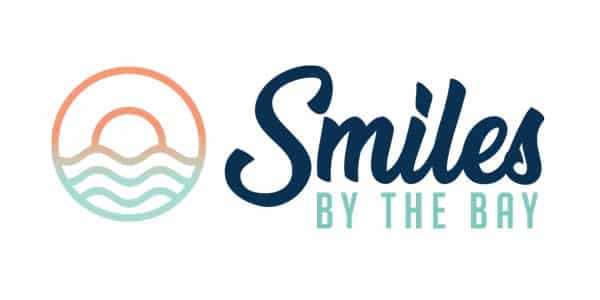Does your jaw hurt when you bite or chew? Does your child have jaw pain because their teeth don’t line up? You could have a temporomandibular joint disorder, commonly called TMJ or TMD. Or you could have a malocclusion. Overbite, underbite, and crossbite are examples of malocclusions. So what do you do if your top and bottom teeth don’t line up? Come see us!
Smiles By the Bay knows all about malocclusions, TMJ, and what to do about both. We can look at your jaws and determine which issue you might have and what treatment would be best for you. First thing’s first — let’s figure out why your jaw doesn’t line up.
TMJ/TMD vs. Malocclusions
So you want to know, “why don’t my teeth line up?” It’s a simple question with a not-so-simple answer. It could be one of two issues, but each has several possible causes. Let’s try to simplify things.
In most cases, your teeth don’t line up because you have TMJ or a malocclusion. What are those? Let us explain.
TMJ/TMD
The temporomandibular joint is the connection between your upper and lower jaws on each side of your head. The joint sits right in front of your ears. While you can move your jaw side to side slightly, the movement is limited or is supposed to be. If the bone is out of joint or moves too much to one side or another, that could be a sign of TMJ/TMD.
Causes of TMJ
The biggest sign of TMJ is pain at the joint, which happens when the tissue around the joint becomes inflamed or damaged. While TMJ can affect just one joint, it’s more common to experience pain on both sides because the causes of TMJ affect both sides.
So how does TMJ cause your teeth not to line up? If the joint is moved out of alignment, the ligaments, fluids, and tendons around the joint become inflamed. The joint can move out of alignment because wisdom teeth cause it to shift. TMJ can also be caused by grinding your teeth, injury, stress, arthritis, dislocation, or an improper bite.
Solutions for TMJ Pain
If wisdom teeth cause your TMJ disorder, a common solution is to pull the wisdom teeth. This keeps the jaw from shifting out of place and should relieve the pain.
For other issues, solutions could include a lower jaw sling, which properly positions the jaw and allows the joints to heal. For those who grind their teeth, a mouth appliance called a mouth guard or night guard may be used to hold the jaw in its proper position during sleep and eliminate teeth grinding.

Malocclusions – Overbite, Underbite, Crossbite
It may be that your jaw is out of line because you have a malocclusion. That’s a big fancy word for orthodontist issues such as overbites, underbites, and crossbites. When you have one of these, your teeth are out of their proper place, creating problems with biting and chewing. Let’s take a closer look at the different types of malocclusions.
Class 1 – Neutrocclusion
The first type is a neutrocclusion, which means your back teeth are aligned just fine, but your front teeth overlap. This is the most common type of malocclusion.
Class 2 – Distocclusion
The second type is called a distocclusion. This means your entire top teeth are moved forward from your lower teeth. This is commonly called an overbite. When this becomes severe, it can be called a deep bite.
Class 3 – Mesiocclusion
The third type is called a mesiocclusion. In this case, your lower teeth are thrust forward to sit in front of your upper teeth. This is commonly called an underbite.
Other types of Malocclusion
Two other types of malocclusions can cause jaw problems are the open bite and the crossbite. Your upper and lower teeth are aligned with an open bite, but they don’t touch. This is a common one for those who suck their thumbs too long.
With a crossbite, your upper teeth fit inside your lower teeth instead of fitting together. This can be because your upper jaw is smaller than it should be.
When your teeth are misaligned, it can cause problems biting or chewing your food because your jaw isn’t working the way it’s designed to do. When that happens, your joint can become inflamed, and you could end up with jaw pain or even develop TMJ disorder.

Fixing Malocclusions and Reducing Jaw Pain
So how do you solve the malocclusion problems? There are various methods, but the most common way is through orthodontics. Braces or clear aligners can reposition your teeth and restore your bite to its proper alignment. This can reduce your jaw pain. You’ll also need to get rid of any bad habits you may have, such as thumbsucking or not practicing good oral hygiene. Smiles By the Bay can offer the best methods for breaking bad habits and restoring your smile!
TMJ pain can get worse over time and eventually can lead to damage to the joint itself. If you have jaw pain or your teeth don’t line up anymore, Smiles By the Bay can help! If you’re in the Annapolis, MD, Kent Island, MD, or Denton, MD, areas, give us a call or start a online consultation. Let us help find a solution to your jaw pain!
Smiles by the Bay
This Team Truly Cares!
Happy patients are the best patients! We want to see you smile at every visit!
READ REVIEWS






